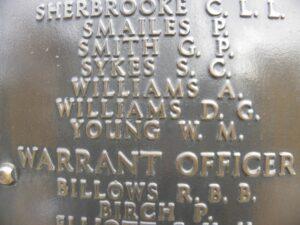Neuadd Cross is situated near Ponthirwaun, about four miles from Newcastle Emlyn on the banks of the River Teifi. The War Memorial at Neuadd Cross contains the names of the men from the area who fell during both World Wars, many of whom lived in the Parish of Llandygwydd. Many thanks to Raymond Jones for the photographs of the memorial.
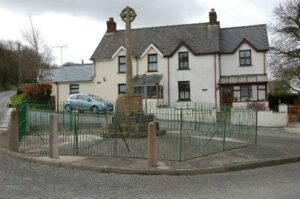
The Great War, 1914-1918
George Stewart Berrington Davies, Lieutenant, Rifle Brigade. George was born on 31 January 1899, the son of David and Joyce Berrington Davies, of Plas, Llangoedmore. He married Mary Joyce Emily Prioleau in 1917, and was commissioned from the OTC just after, on 29 August 1917, being posted to the 2nd Battalion, Rifle Brigade. George doesn’t look to have served during the Great War, but was instead part of the Allied army sent to North Russia, to take part in Operation Archangel. George returned home after the Allies pulled out of Russia, but the campaign had seriously damaged his health. He died on 26 October 1919, aged 20, and is buried at Llandygwydd (St. Tygwydd) Churchyard.
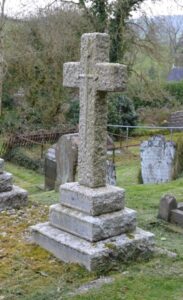
Gilbert Bryan Francis, Private, 2138, New Zealand Expeditionary Force. Gilbert was born at Llandygwydd Vicarage on 17 October 1886, the son of Rev. David Francis, Llandygwydd, and was the husband of Amy Francis, of Northampton. He was educated at Llandovery College from 1898 to 1904, and emigrated on 4 December 1912, becoming a Farmer and residing at the home of H. Nelson, Konini, Pahiatua, New Zealand. Gilbert enlisted on 15 February 1915, into the 5th (Wellington) Rifles, NZEF, and in June 1915 was posted to the Dardanelles. On 15 August 1915, Gilbert joined the 17th Battalion, (B Company) 5th Wellingtons on Gallipoli as a replacement, after the Battalion’s heavy casualties suffered at Chunuk Bair. On 3 September 1915 Gilbert was struck down with fever and admitted to No.16 Casualty Clearing Station on the Peninsula. From Gallipoli he was transferred to Mudros, and later embarked for Malta on the Hospital Ship ‘Neuralia’. By 4 October 1915 Gilbert’s health had deteriorated. Gilbert died of enteric fever at St. George’s Military Hospital, aged 29, on 13 November 1915. He is buried at Pieta Military Cemetery, Malta.
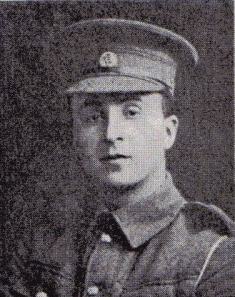
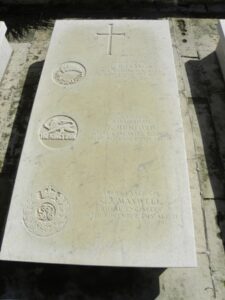
Reginald Arthur Hoare, Captain, Pembroke Yeomanry. Reginald was born on 13 July 1878, the son of Charles Arthur Richard Hoare and Margaret Short. He married Una Mildred Williams, daughter of Thomas C. Williams, on 23 February 1909. Reginald was commissioned into the Pembroke Yeomanry, and was posted to France on 22 April 1918, where he became attached to the 1st Battalion, King’s Shropshire Light Infantry. The battalion was attached to 16 Brigade, 6th Division. Reginald joined the battalion at Ypres, and saw his first action during the desperate defence around Messines. At the end of August the Division was ordered south, to take part in the offensive on the Aisne. On 13 September the Division took up positions near Holnon Wood, where they were tasked with attacking from on 18 September. Reginald was killed in action at Holnon on 19 September 1918, aged 40. He is buried at Chappelle British Cemetery, Holnon, France.
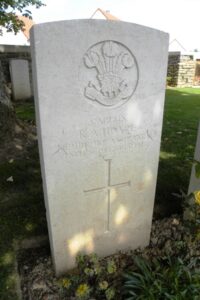
Cecil Gwyn Sutton Jones, Flight Cadet, Royal Air Force. Cecil was the only son of Colonel G. Sutton Jones, and of Mrs. G. Sutton-Jones, of Roseden, Wooperton, Northumberland. Cecil volunteered to train as a pilot with the Royal Air Force, and was posted to RAF East Fortune, in Scotland. He was killed during a flying accident at RAF Cramlington on 11 September 1918, when flying aboard an Avro 504K, piloted by Second Lieutenant Alexander Coghill. The aircraft stalled during a turn and crashed into a field near Cramlington Railway Station, killing both men. Cecil was 28 years old, and is buried at Old Bewick (Holy Trinity) Churchyard, England.
John Jones, Driver, 707356, Royal Field Artillery. John was the son of Evan and Mary Anne Jones, of Rhydycotty, Ponthirwaun. He enlisted at Aberystwyth into the Cardigan Battery, Royal Field Artillery, and was posted to France during March 1917, with the 331st Brigade, Royal Field Artillery, which was attached to the 66th (2nd East Lancs) Division. The Division initially moved to the Flanders Coast, and at the end of September 1917 moved to Ypres, and took part in the Battle of Poelcapelle. It then moved south to the Somme, and on 21 March 1918 was hit by the German Spring Offensive at the Battle of St Quentin, suffering heavy casualties during the subsequent retreat. John was wounded some days afterwards, and died of his wounds on 6 April 1918, aged 20. He is buried in Namps-Au-Val British Cemetery, France.
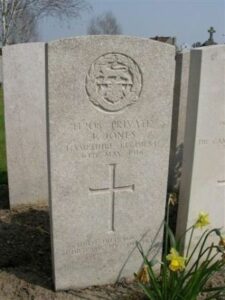
John Lodwick, Sergeant, 14373, South Staffordshire Regiment. John was born at Llandygwydd in 1889, the son of David and Mary Anne Lodwick, of Parkgwniuegod, Llechryd. He enlisted at Penarth on 9 September 1914 into the 3rd Battalion, South Staffordshire Regiment, which was a training battalion for the regiments two main battalions. John remained on home service for the duration of the war, and was discharged as medically unfit on 21 September 1918. John went to live at 7, Woodville Road, Cardiff after being discharged with a pension, with his wife, Margaret Lodwick. Nothing more can be traced of John, as he is not commemorated by the CWGC.
William Louis St Julien Prioleau, Major, Norfolk Regiment. William was the son of Charles and Mary Prioleau, late of Ollerton Hall, Liverpool, and the husband of Eugenie Alice, daughter of Gen. Sir Michael and Lady Biddulph. William had served with the 4th Battalion, Norfolk Regiment (Militia) for several years prior to the outbreak of war. At the outbreak of war the battalion was at Norwich, as part of the Norfolk and Suffolk Brigade, East Anglian Division. In May 1915 the formation was re-designated 163 Brigade, 54th (East Anglian) Division, embarking at Liverpool on 29 July 1915 for Mudros. The Division landed at Suvla Bay, Gallipoli on 10 August 1915. After the evacuation from Gallipoli on 19 December 1915, the Division fought Egypt and Palestine. William had survived the war, but it took a toll on his health. He died in Egypt on 17 October 1919, aged 50, and is buried at Kantara War Memorial Cemetery, Egypt.
Sir Edward John Webley Parry Pryse (Bart), Major, Welsh Regiment. Edward was born in 1862 at Llanbadarn, the son of Sir Pryor Pryse, of Gogerddan. Edward married Nina Katherina Angharad Webley-Parry, daughter of David Kedgwin William Henry Webley-Parry and Nina Katherina Elena de Palatiano, in 1891. Edward had served in the army for some years prior to the outbreak of the Great War, and volunteered to serve with the 9th Battalion, Welsh Regiment, which was attached to 58 Brigade, 19th (Western) Division. The Division moved to France during July 1915, and moved to positions near Loos, where it took part in the opening attack of the Battle of Loos on 25 September 1915. The following year the Division moved to the Somme, where it took part in the second wave of the attack on Ovillers-La Boiselle on 1 July, capturing the village at heavy cost. It then fought through the Somme Battles of Pozières and the Ancre in 1916. In 1917 the Division moved north to Ypres, taking part in the Battle of Messines, then the Third Battle of Ypres. In 1918 the Division had a terrible time, being caught up in the three main German attacks that year, on the Somme, on the Lys and on the Aisne. By then, Edward had been invalided home. He died on 20 October 1918, aged 56, and is buried at Penrhyncoch, at Eglwys Sant Ioan. Edward is not commemorated by the CWGC.
Lemuel Thomas Rees, Private, 29573, South Wales Borderers. Lemuel was born at Llandygwydd in 1895, the son of John and Sarah Rees, of Blaenanerch. He enlisted at Brecon into the South Wales Borderers, and was posted to France in 1916, joining the 6th Battalion, South Wales Borderers, which was the Pioneer Battalion to the 25th Division. The Division had been in France since 26 September 1915, and defended Vimy Ridge against a German attack in May 1916. They then moved to the Somme, and attacked on 3 July near Thiepval. They fought throughout the Battle of the Somme, and then moved to Ploegsteert, where they held the line for the months leading up the Battle of Messines in June 1917. After fighting at Messines, the Division moved north, and fought at Pilckem, before moving south again, where they took up positions around Bullecourt in March 1918, where it was used to reinforce the badly depleted British units that were hit in the area by the German Spring Offensive. They moved north to Flanders to rest on 30 March 1918, but were caught up in the German Lys Offensive, suffering heavy casualties before being moved to the Aisne to rebuild. On 26 May 1918 they took up positions south of the Aisne, to guard against a predicted German Offensive, which hit them the following day, and during the coming days the Division was virtually annihilated. The Division moved to England to rebuild, returning to France in September, and taking part in the 100 days offensive. Lemuel had survived the war, but had been evacuated sick to Wimille. He died there on 13 November 1918, aged 23, and is buried at Terlincthun British Cemetery, Wimille, France.
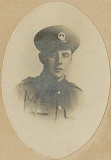
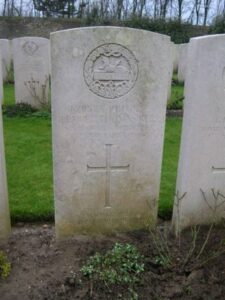
John Thomas, Private, G/20838, East Kent Regiment. John was born at Northampton in 1894, the son of David and Margaret Thomas. The family later resided at Ffynongarreg, Llandygwydd. John resided at Llangynin prior to the war, and enlisted at Carmarthen into the army. John was posted to the 1st Battalion, East Kent Regiment, which was in France attached to 16 Brigade, 6th Division. The Division had been on the Western Front since 10 September 1914, and had fought on the Aisne. It had fought in Flanders until 1916 when it took part in the Somme offensive. In 1917 it had fought at Arras and Cambrai. In the spring of 1918 the Division was one of those hit by the German Offensive on the Somme, which had been launched on 21 March, and took part in desperate fighting. John was killed on the first day of the offensive, on 21 March 1918, aged 25. He has no known grave, and is commemorated on the Arras Memorial, France.
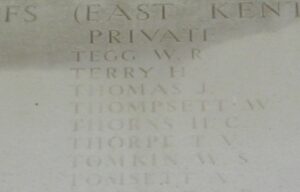
John George Thomas, Sapper, 44403, Royal Engineers. John was the son of Thomas and Martha Thomas, of Llandygwydd. John enlisted at Carmarthen into the Royal Engineers, and landed in France on 19 July 1915 with the 81st Field Company, Royal Engineers, which was attached to the 19th (Western) Division. The Division saw its first major action at the Battle of Loos on 25 September 1915, and the following year made a name for itself at the Battle of the Somme. During 1917 the Division fought at the Battle of Messines, and during the Third Battle of Ypres. In 1918 the Division was caught up in the German Spring Offensive near St. Quentin, where they suffered terrible casualties before being evacuated to Messines to rebuild. Unfortunately the Germans launched a fresh attack here in April 1918, and the 19th Division was again battered, moving south to the quieter French sector to rebuild. Lightning was to strike the division three times, as the German’s launched an offensive on the Aisne on 27 May 1918. John was killed in action here on 6 June 1918. He was 41 years old, and is buried at Marfaux British Cemetery, France.
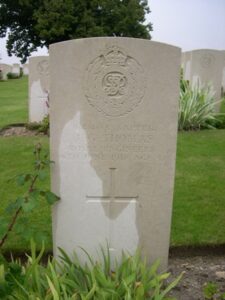
William John Thomas, Private, 75173, Royal Army Medical Corps. William was the son of Mary Thomas, of Ponthirwain, Llechryd. He resided with his wife, Martha Thomas, at 12, Glogue Terrace, Glogue, prior to the war, and enlisted at Cardigan into the Royal Army Medical Corps. William was posted to France, probably early in 1917, where he joined the 54th Field Ambulance, Royal Army Medical Corps, which was attached to the 18th (Eastern) Division. In March 1917 the Division followed the German Retreat to the Hindenburg Line, and in May took part in the Third Battle of the Scarpe, which was part of the Arras Offensive. Later that year the Division fought at Third Ypres. In 1918 the Division were stationed south of the Somme, and were one of the Divisions hit there by the German Spring Offensive, which was launched on 21 March 1918. They fought at the Battle of St Quentin, and suffered terrible casualties, and then took part in the Battle of the Avre and the Actions of Villers-Brettoneux. On 8 August 1918 they formed part of the force which attacked the German positions around Villers Brettoneux, south of the Somme Valley, during the Battle of Amiens, and then took part in the Battle of Albert, which began the great push by the Allies which ended the war. William was killed in action during fighting at Franvillers on 22 August 1918. He was 24 years old, and is buried at Franvillers Communal Cemetery Extension, France.
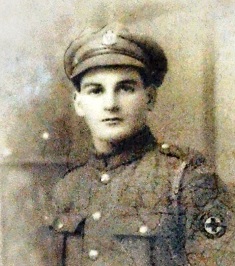
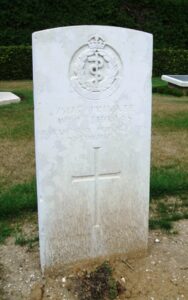
World War Two, 1939-1945
Thomas Emlyn Davies, B.A., Pilot Officer, 116950, Royal Air Force Volunteer Reserve. Thomas was the son of David and Elizabeth Davies, of Beili Farm. He served with the Royal Air Force as an Observer with 226 Squadron, RAF. The Squadron was equipped with the Bristol Blenheim when Thomas joined it, and re-equipped with the Douglas Boston early in 1942. Thomas was probably killed in a flying accident on 12 April 1942. He was 26 years old, and is buried at Harpswell (St Chad) Churchyard, England.
Daniel Elias, Sailor, Merchant Navy. Daniel was born in 1906, the son of John and Sarah Elias, of Glan-Hirwen, Beulah. He served with the Merchant Navy, and during the early months of the war was serving aboard the SS British industry, a steam powered oil tanker. He became ill aboard ship whilst it was en-route to Canada, and died at sea of a pulmonary embolism on 13 August 1941, aged 35. Daniel’s body was taken ashore at Halifax, Nova Scotia, where he was buried. He is commemorated on the family grave in Beulah.
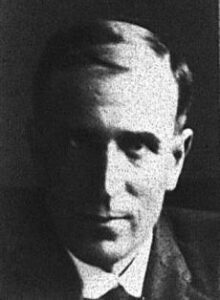
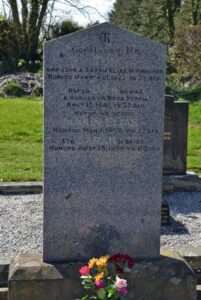
Samuel Gwilym Evans, Third Engineer Officer, Merchant Navy. Samuel was the son of Samuel and M. E. Evans, and the husband of Edith Evans, of Penpark. He served with the Merchant Navy aboard the SS Ciscar, a London registered Cargo Steamer. On 19 August 1941 she was on route from Bristol for Gibraltar in Convoy OG-71, carrying a general cargo, when she was torpedoed by the German submarine U-201 and sank with the loss of 13 lives. Samuel was 30 years old when he died that day, and is commemorated on the Tower Hill Memorial, London.
David Philip Griffiths, Carpenter, Merchant Navy. David was the son of Thomas and Sarah Ann Griffiths, of Beulah. He resided at Bowls, Blaenporth prior to the war, and served in the Merchant Navy aboard the SS Newton Pine, a Cardiff registered cargo steamer. On 16 October 1942, she was on route from Hull for Halifax in ballast when she was torpedoed by the German submarine U-410, and sunk. David was 20 years old when he died that day, and is commemorated on the Tower Hill Memorial, London.
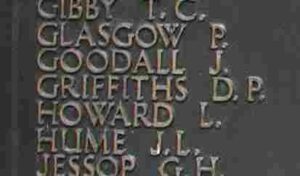
Reverend Dewi Henry James, Chaplain (Squadron Leader), 106645, Royal Air Force Volunteer Reserve. Dewi was the son of Samuel and Margaret James, of Cwrt-Hen, Beulah, Newcastle Emlyn. Prior to the war he resided with his wife, Megan, at Newport, Gwent, where he was a Minister of Religion at Mynydd Seion Chapel, High Street. Dewi volunteered to serve as a Chaplain (Squadron Leader) with the Royal Air Force Volunteer Reserve. After the invasion of occupied Europe, Dewi was among a large party of RAF servicemen who, along with trucks and supplies for the RAF in Belgium, were aboard the Landing Ship LST-420. It was unable to enter the port of Ostend because of a severe storm and the captain decided to return to England, but hit a mine, split in two, and sank. Fourteen officers and 224 other ranks were lost, with only 31 men saved. Dewi was lost in the sinking on 7 November 1944. He was 28 years old, and is commemorated on the Runnymede Memorial, Surrey.

David Morris Jones, Sergeant, 549292, Royal Air Force. David was the son of William Morris Jones and Rachel Anne Jones, and the husband of Edna Jones, of Cwmcoy. He served with 10 Squadron, Royal Air Force, which was equipped with the Armstrong Whitworth Whitley. The squadron was attached to No. 4 Group of Bomber Command, and re-equipped with the Handley Page Halifax in December 1941, moving to RAF Leeming, Yorkshire. David was killed when his aircraft was lost on a raid on 3 July 1942. He was 25 years old, and is commemorated on the Runnymede Memorial, Surrey.
John Simon Jones, Sailor, Merchant Navy. John resided at Tandderwen, Neuadd Cross. He cannot presently be identified.
Ronald James Jones, Able Seaman, D/JX 188034, Royal Navy. Ronald was the son of John and Eleanor Jones, of Newcastle Emlyn. Ronald was a pre-war regular in the Royal Navy, and served aboard HMS Edinburgh. Edinburgh served as escort for the North Atlantic Convoys. On 2 May 1945, HMS Edinburgh was escorting Convoy QP-11, carrying a cargo of £45 million in gold bullion, when she was torpedoed by the German submarine U-456. The money was a part payment by Stalin for War Materials. After a desperate attempt by her crew to save her, and a gallant battle against further German aerial and sea-borne attacks, the Edinburgh was scuttled and sank. Ronald was killed in action aboard her on 2 May 1942, and is commemorated on the Plymouth Naval Memorial, Devon.
David John Leonard Lodwick, Sailor, Merchant Navy. David was the son of Ben Lodwick, and of Mary J. Lodwick, of Cwmcoy. He served with the Merchant Navy aboard the SS Port Hunter, a London registered Cargo Steamer. Early in the morning of 12 July 1942, Port Hunter was struck on the port side by a torpedo from the German submarine U-582, and sank within two minutes, with the loss of 83 lives. David was 24 years old when he died that day, and is commemorated on the Tower Hill Memorial, London. He is also commemorated at Llandygwydd.
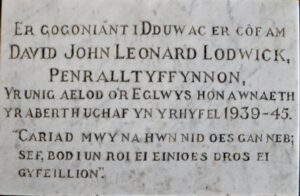
David William Reed, Cabin Boy, Merchant Navy. David, known as Dai, was the son of Robert and Sarah Reed, of Cefn-Bach, Llandygwydd. He served with the Merchant Navy aboard the SS Baron Carnegie, an Ardrossan registered Cargo Steamer. On 11 June 1941 she was on voyage from Swansea for Takoradi in ballast when she was torpedoed by German aircraft 15 miles West of St David’s Head, and sank whilst in tow. Dai was just 17 years old when he died that day, and is commemorated on the Tower Hill Memorial, London.
Daniel Hector Rowlands, Carpenter, Merchant Navy. Daniel was born on 20 July 1912, the son of Dennis and Hannah Rowlands, of Cwmcoy. He served as a Carpenter with the Merchant Navy aboard the SS King Frederick, a London registered Cargo Steamer. On 19 July 1944, she was on route from Haifa and Aden for Colombo and Calcutta, when she was torpedoed by German submarine U-181 and sunk with the loss of 25 lives. Daniel was 31 years old when he died that day, and is commemorated on the Tower Hill Memorial, London.
Dewi Hirwen Thomas, Flying Officer, 117517, Royal Air Force Volunteer Reserve. Dewi was the son of Thomas and Mary Anne Thomas, of Llechryd. He served with 169 Squadron, Royal Air Force, which was a tactical reconnaissance unit, equipped with the North American Mustang. In 1943 the Squadron re-equipped with the De Havilland Mosquito night fighter. Dewi was killed on a mission on 30 April 1943. He was 22 years old, and is commemorated on the Runnymede Memorial, Surrey and on the family grave in Beulah.
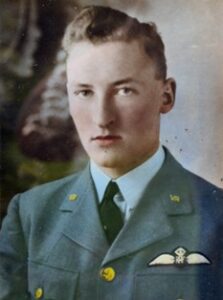
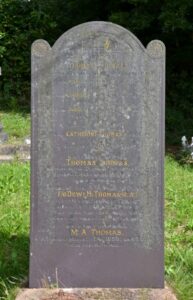
David Glanmor Williams, Pilot Officer, 160521, Royal Air Force Volunteer Reserve. David was the son of Mr. and Mrs. Evan Williams, of Bryn Eglur, Beulah, and the husband of Gwen Williams, of Pontyberem. He served as a Pilot with 14 Squadron, Royal Air Force, which flew the Martin B-26 Marauder, based at Protville, and flew anti-submarine patrols. David was killed on 19 October 1943 while flying aboard Marauder FK127 which crashed in the Mediterranean following a mechanical failure. He was 23 years old, and is commemorated on the Malta Memorial, Malta.
